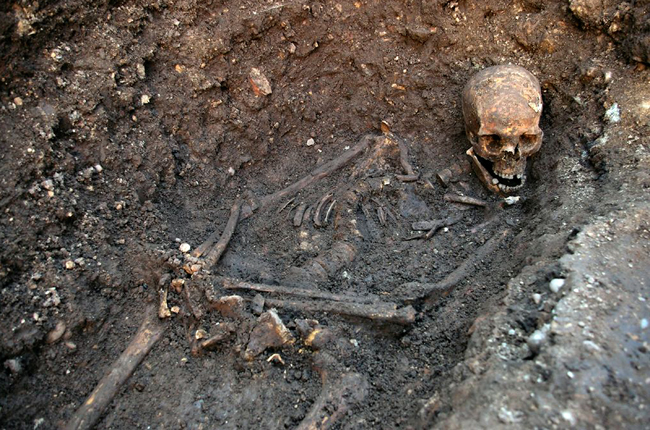LEICESTER, England — He was king of England, but for centuries he lay without shroud or coffin in an unknown grave, and his name became a byword for villainy.
On Monday, scientists announced they had rescued the remains of Richard III from anonymity — and the monarch’s fans hope a revival of his reputation will soon follow.
In a dramatically orchestrated news conference, a team of archaeologists, geneticists, genealogists and other scientists from the University of Leicester announced that tests had proven what they scarcely dared to hope — a scarred and broken skeleton unearthed under a drab municipal parking lot was that of the 15th-century king, the last English monarch to die in battle.
Lead archaeologist Richard Butler said that a battery of tests proved “beyond reasonable doubt” that the remains were the king’s.
Lin Foxhall, head of the university’s school of archaeology, said the discovery “could end up rewriting a little bit of history in a big way.”
Few monarchs have seen their reputations decline as much after death as Richard III. He ruled England between 1483 and 1485, during the decades-long battle over the throne known as the Wars of the Roses, which
pitted two wings of the ruling Plantagenet dynasty — York and Lancaster — against one another.
After his death, historians writing under the victorious Tudors comprehensively trashed Richard’s reputation, accusing him of myriad crimes — most famously, the murder of his two nephews, the “Princes in the Tower.”
William Shakespeare indelibly depicted Richard as a hunchbacked usurper who left a trail of bodies on his way to the throne before dying in battle, shouting “My kingdom for a horse.”
That view was repeated by many historians, and Richard remains a villain in the popular imagination.
Philippa Langley of the Richard III Society — which seeks to restore the late king’s reputation and backed the search for his grave— said that for centuries Richard’s story has been told by others, many of them hostile.
She hopes a new surge of interest, along with evidence from the skeleton about how the king lived and died will help restore his reputation.
“A wind of change is blowing, one that will seek out the truth about the real Richard III,” she said.
Langley, who helped launch the search for the king, said she could scarcely believe her quest had paid off.
“Everyone thought that I was mad,” she said. “It’s not the easiest pitch in the world, to look for a king under a council car park.”









